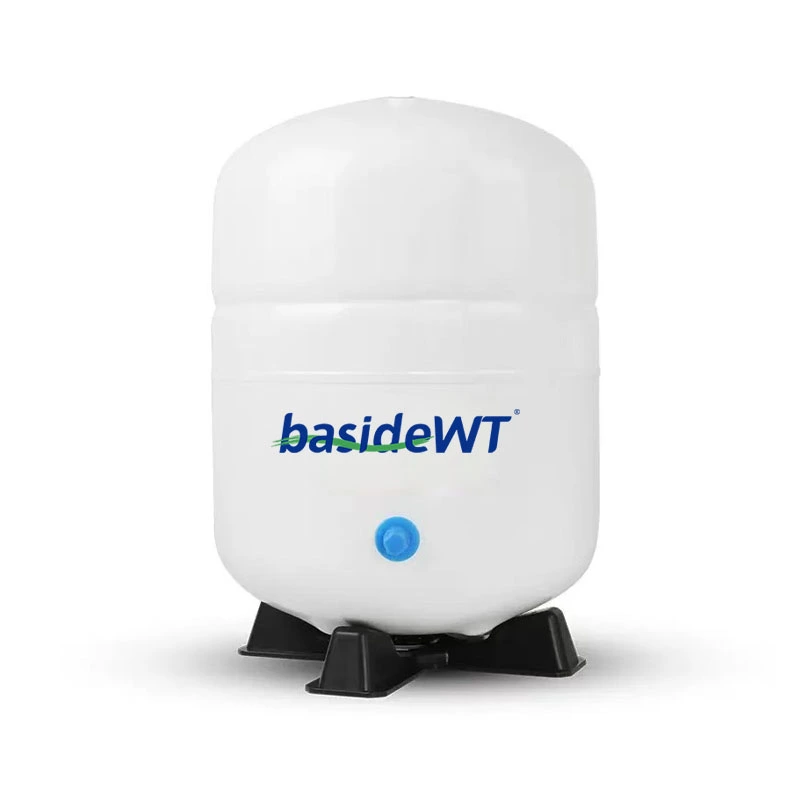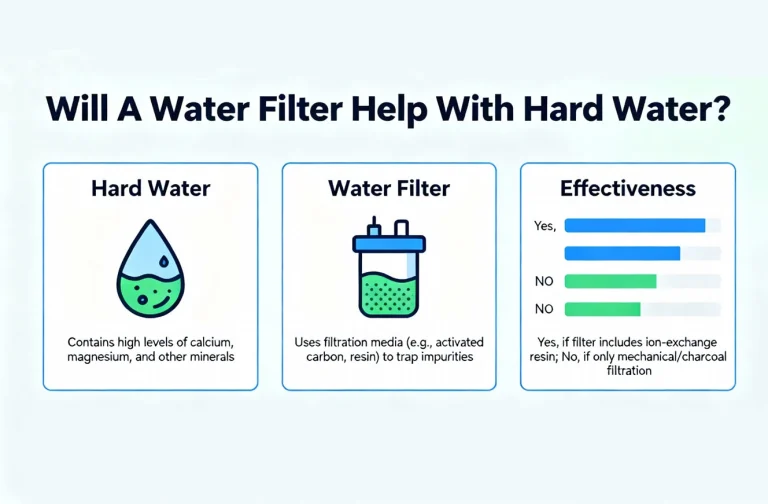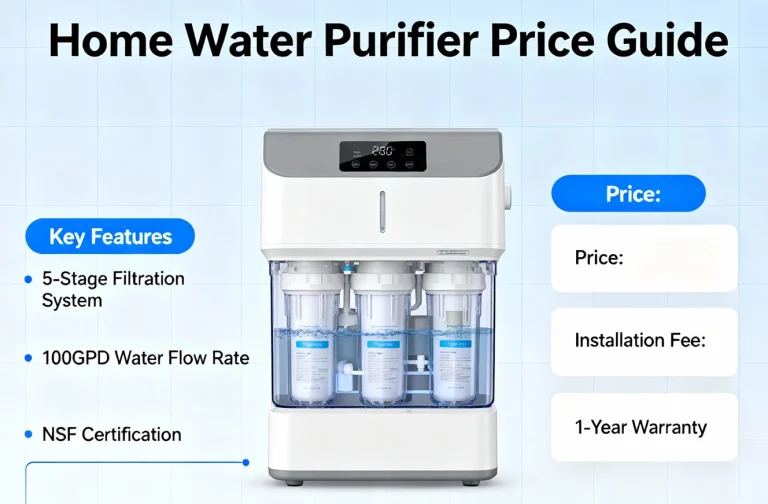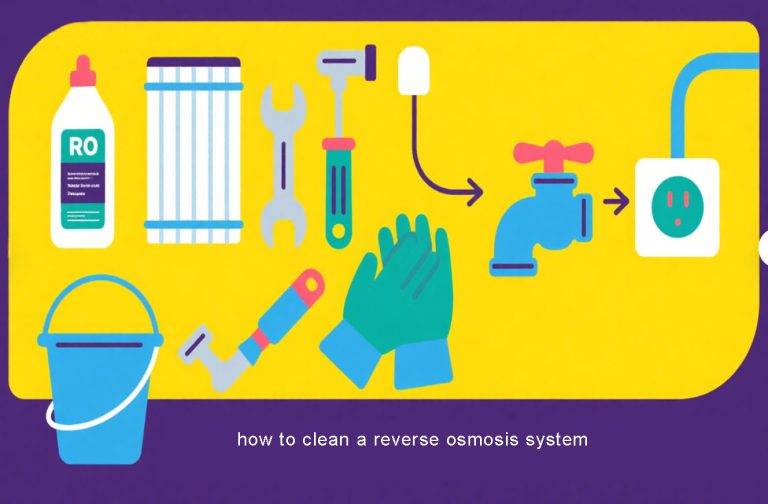BasideWT- Whole Home Water Filtration System & Replacement

Reverse Osmosis Ro Water Storage Sank -BasideWT
Reverse Osmosis Ro Water Storage Sank plays a vital role in maintaining the efficiency and stability of any water purification system. It ensures a consistent supply of clean, pressurized water whenever you turn on the faucet. Without this essential component, your RO system would deliver water at an extremely slow rate—making daily use inconvenient. At BasideWT, we design our storage tanks with one goal in mind: long-lasting reliability and superior hygiene.
Clean water isn’t just about filtration—it’s also about safe storage. Therefore, understanding how an RO water tank functions, how to choose the right capacity, and how to maintain it properly can make a significant difference in the performance of your filtration system.
What Is a Reverse Osmosis RO Water Storage Tank?
The Role of Pressure and Capacity
In every reverse osmosis system, water passes through several filtration stages before being stored in the tank. The reverse osmosis RO water storage tank is a sealed pressure vessel divided by a flexible diaphragm. One side contains purified water, and the other holds pressurized air. As water fills the tank, the air chamber compresses, creating pressure that pushes water out when needed.
BasideWT tanks are designed to maintain an optimal pressure balance. This ensures fast water delivery and minimal strain on the RO membrane. For households or commercial applications, our tanks come in various sizes—from compact 3.2-gallon units to large 20-gallon stainless-steel tanks—catering to diverse needs.
Material and Safety Considerations
Material safety defines the quality of your drinking water. BasideWT tanks use food-grade butyl diaphragms and epoxy-coated steel shells to prevent corrosion. Unlike cheaper models, our designs avoid chemical leaching, ensuring the stored water remains pure and odor-free.
However, it’s worth noting that not all tanks on the market meet these safety standards. Some low-cost imports use substandard liners that degrade over time. Therefore, choosing a trusted brand like BasideWT ensures you receive a tank that protects your water quality as effectively as it stores it.
How a Reverse Osmosis RO Water Storage Tank Works
Step-by-Step Water Flow
Let’s explore how the tank integrates into the overall system.
- Water enters the pre-filters where sediment, chlorine, and heavy metals are removed.
- The purified water then moves through the RO membrane, filtering out up to 99% of dissolved solids.
- The clean water collects in the reverse osmosis RO water storage tank, waiting under pressure.
- When you open your faucet, the air bladder pushes the water out immediately, delivering it at full flow.
This process happens quietly and automatically. The tank’s pressurized design ensures that even small RO systems can deliver water quickly without requiring external pumps.
The Physics Behind Pressure
Interestingly, the physics within the tank resembles that of a spring. The more water you store, the higher the internal pressure becomes. When the faucet opens, pressure decreases, allowing the RO system to refill.
However, balance is crucial. Too much air pressure can limit water capacity, while too little pressure reduces flow. BasideWT tanks are factory-precharged to optimal levels—typically around 5–7 psi—so users experience smooth performance right out of the box.
Key Features of BasideWT Reverse Osmosis RO Water Storage Tanks
Durable Structure and Design
BasideWT’s tanks combine advanced manufacturing and meticulous quality control. The seamless construction, anti-rust coating, and butyl rubber diaphragm extend service life beyond 10 years. Each tank is pressure-tested and certified to meet NSF/ANSI 58 standards, ensuring compliance with global drinking water safety guidelines.
Hygienic Internal Liners
Our tanks feature polypropylene liners that resist bacterial growth. This prevents common issues like taste contamination or biofilm buildup—an overlooked problem in low-cost tanks. As a result, BasideWT systems maintain fresh water quality even during long storage periods.
Variety in Capacity and Configuration
Whether you need a small under-sink model or a large Reverse Osmosis Ro Water Storage Sank for commercial use, BasideWT provides a full range of options. For instance:
- 3.2G and 4G tanks: Ideal for residential RO systems
- 10G–20G tanks: Perfect for small businesses, cafés, or laboratories
- Stainless-steel series: Suitable for industrial or high-demand applications
Each tank comes equipped with a universal ¼” connection port, making installation easy across brands.
| Model | Volume (Cubic Decimeters) | Water Storage Capacity (L) | Connection | Dimensions (mm) | |
| Max Height | Max Width | ||||
| 1.5G Tank | 5.67 | 2.83 | 1/4 NPT | 223 | 195 |
| 2.0G Tank | 7.57 | 3.78 | 1/4 NPT | 252 | 195 |
| 2.5G Tank | 9.46 | 4.73 | 1/4 NPT | 325 | 229 |
| 3.0G Tank | 11.35 | 5.67 | 1/4 NPT | 325 | 229 |
| 3.2G Tank | 12.11 | 6.05 | 1/4 NPT | 365 | 278 |
| 6.0G Tank | 22.71 | 11.35 | 1/4 NPT | 460 | 280 |
| 11G Tank | 41.63 | 20.81 | 3/4 NPT | 550 (with base) | 400 |
| 20G Tank | 75.7 | 37.85 | 3/4 NPT | 720 (with base) | 400 |
| 28G Tank | 105.98 | 52.99 | 3/4 NPT | 885 (with base) | 400 |

Why Choose BasideWT for RO Water Storage Tanks
Precision Engineering and Quality Control
BasideWT doesn’t just assemble tanks—we engineer them. Every stage, from diaphragm molding to leak testing, follows a rigorous process. The tanks undergo 100% pressure inspection to eliminate microleaks, ensuring users receive a reliable product with no hidden flaws.
Long-Term Cost Efficiency
At first glance, all RO tanks look similar. But quality affects long-term costs. Inferior tanks lose pressure, develop bacterial odor, or rust within a few years. BasideWT tanks, by contrast, maintain consistent performance for over a decade. Thus, while the initial investment may seem slightly higher, it saves you money on maintenance and replacement in the long run.
Global Recognition and Compatibility
BasideWT tanks are compatible with leading RO systems like Pentair, Watts, PurePro, and APEC. Our tanks are exported to over 60 countries and trusted by professionals for both residential and commercial installations.
However, what truly distinguishes us isn’t just technical quality—it’s our commitment to innovation and user safety. Each product undergoes continuous improvement based on customer feedback and laboratory testing.
Common Problems and Solutions with RO Water Storage Tanks
Low Water Flow
If your faucet delivers a weak stream, the problem might be inside the tank. Over time, the air bladder loses pressure. The solution is simple: measure the pre-charge pressure (should be around 7 psi when empty). Reinflate if necessary using a standard air pump.
Bad Taste or Odor
Even the cleanest water can develop an off-taste if it sits too long in a poorly maintained tank. To prevent this, BasideWT recommends flushing your system every 2–3 months. Our tanks feature smooth inner linings, which reduce residue buildup and make cleaning easier.
Waterlogging or Bladder Rupture
A ruptured diaphragm prevents pressure buildup, leading to poor flow. Though rare in BasideWT models, this can happen in inferior tanks. If diagnosed, the tank must be replaced. To avoid such problems, ensure your system pressure never exceeds the manufacturer’s rating (usually around 100 psi).
Maintenance Tips for Reverse Osmosis Ro Water Storage Sank
Regular Pressure Checks
Check the air pre-charge at least twice a year. You can use a tire gauge to ensure the pressure remains within the 5–7 psi range when empty. Proper pressure keeps your system working efficiently.
Sanitization Routine
Every 6–12 months, sanitize the tank and RO system. Use food-grade hydrogen peroxide or diluted bleach solutions. Rinse thoroughly before reuse. BasideWT tanks are designed with easy-access valves for safe cleaning.
Replace When Needed
Even with excellent maintenance, all tanks have a lifespan. If you notice frequent pressure drops or metallic odors, it’s time for replacement. Fortunately, BasideWT tanks offer clear labeling and easy compatibility, making replacement straightforward.
Technical Specifications and Certifications
| Specification | BasideWT Standard Model | Premium Stainless Model |
|---|---|---|
| Capacity | 3.2–20 Gallons | 5–40 Gallons |
| Working Pressure | 30–100 psi | 30–120 psi |
| Material | Steel + Polypropylene | 304 Stainless Steel |
| Liner Type | Food-grade Polypropylene | Food-grade Polypropylene |
| Certification | NSF/ANSI 58, CE | NSF/ANSI 58, CE, ISO 9001 |
| Lifespan | 10+ Years | 15+ Years |
These parameters ensure our tanks perform optimally in both household and industrial RO systems.
The Science of Water Storage: Why It Matters
Water, though simple, is chemically active. It can dissolve minerals, absorb gases, and support microbial life. Therefore, the reverse osmosis RO water storage tank serves as both a barrier and a stabilizer.
It prevents recontamination after purification—a crucial function often overlooked. Moreover, temperature fluctuations or stagnant conditions can affect taste and freshness. BasideWT tanks are built with thermal stability and anti-bacterial coatings to counter these effects.
Interestingly, despite their simple appearance, RO tanks combine engineering, chemistry, and physics in one compact unit. Their role in maintaining post-filtration integrity is as important as the membrane itself.
Environmental and Economic Advantages
Sustainable Design
BasideWT’s production process emphasizes environmental responsibility. Our manufacturing facilities recycle wastewater, reduce chemical discharge, and use eco-friendly materials in coating and packaging.
Energy Efficiency
Unlike electric pumps, RO storage tanks rely purely on air pressure. This means zero energy consumption during operation—making them eco-friendly and cost-effective.
Long Lifespan = Less Waste
Each durable tank reduces landfill waste by lasting longer. We also offer refurbishment programs for select commercial models, allowing customers to extend product life sustainably.
How to Determine if the RO Pressure Tank Is Under Pressure
1. Test for Inner Liner Damage
Turn the tank’s nozzle downward and gently press the valve core.
- If water comes out instead of air, the inner bladder is damaged and the tank cannot be repaired.
- This means the internal liner has ruptured, allowing water to enter the air chamber.
2. Check for Lack of Air Pressure
If the tank is full of water and pressing the air valve releases no water or air, yet water flow from the faucet remains very weak, the issue is likely insufficient air pressure.
- This condition is repairable by recharging the air chamber to the recommended pre-charge level (usually 5–7 psi when empty).
Instructions for Proper Use
- Unpack and Prepare the Tank
Remove the tank from its box and plastic film. Take off the protective cap from the water inlet, then slowly screw the ball valve onto the inlet port. Hand-tighten securely and connect the PE tubing. - Check for Leaks
After installation, open the valve to check for any leakage.- If leaks appear, readjust the ball valve.
- If necessary, wrap 8–15 turns of PTFE (raw material) tape around the threads to ensure a proper seal.
- Initial Flushing Process
To clean the inner tank and the post-carbon filter:- Allow the first full tank of water to fill completely.
- Then open the faucet and drain all the water.
- The second tank of water is safe for normal use.
- Regular Maintenance
- During normal operation, drain the tank once a month to flush the system.
- Always drain and clean after replacing filter cartridges.
- This helps remove residual contaminants, keeps the inner tank and pipelines clean, and ensures safe, healthy drinking water.
Precautions
- Correct Valve Installation
- Avoid installing the ball valve at an angle.
- Do not overtighten—hand-tightening is sufficient to prevent thread damage.
- When Leaving Home
- If you will be away for an extended period, close the inlet valve and shut off the water source to prevent leaks or contamination.
- Proper Connection Setup
- Ensure all pipelines are correctly connected.
- Verify that the high-pressure switch can effectively stop water flow when the tank is full.
- Temperature and Placement
- The applicable operating temperature range is 4°C–45°C (39°F–113°F).
- Avoid direct sunlight or exposure to high heat, which can shorten the tank’s lifespan.
Choosing the Right Reverse Osmosis Ro Water Storage Sank Size
The right tank size depends on daily water usage and system flow rate. As a rule of thumb:
- 3.2G–4G: Suitable for families of 2–4
- 10G–14G: Ideal for small offices
- 20G+: For restaurants or industrial use
However, it’s not only about size. Pressure balance, flow rate, and maintenance accessibility matter equally. BasideWT offers consultation support to help customers match tanks to their exact RO setup.
Contact BasideWTOur BasideWT water specialists are ready to assist.
-
Mobile/WhatsAPP: 86-13548779363
-
Email: sales@basidewt.com
-
Business hours: Monday to Friday (9AM – 10PM)
-
Website: https://www.basidewt.com/
-
Address: Aibang Technology Industrial Park, No. 559 Yun Qi Lu,Yuelu District, Changsha, Hunan, China







